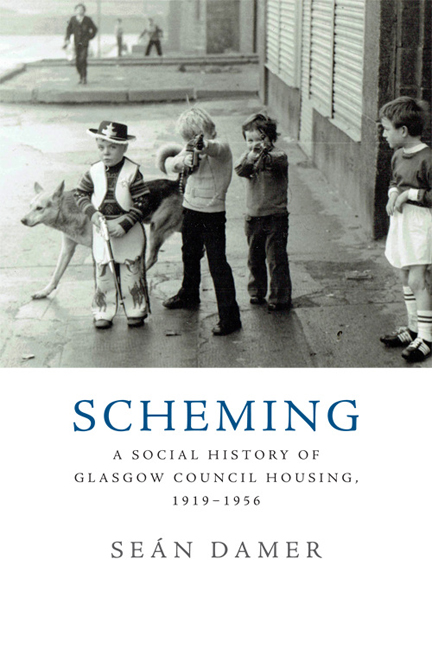Book contents
- Frontmatter
- Dedication
- Contents
- List of Tables and Figures
- Acknowledgements
- Preface
- 1 Introduction
- 2 Mosspark: Homes Fit for Heroes?
- 3 Hamiltonhill: A Pioneering Slum-Clearance Scheme
- 4 West Drumoyne: Blue-Collarland
- 5 Blackhill: Out of the Slums
- 6 Craigbank: Amateur Dramatics?
- 7 South Pollok: ‘The Bundy’
- 8 Alarums and Excursions
- Appendix 1 Balloting for a Council House
- Appendix 2 Methodological Notes
- Bibliography
- Index
Appendix 2 - Methodological Notes
Published online by Cambridge University Press: 12 November 2019
- Frontmatter
- Dedication
- Contents
- List of Tables and Figures
- Acknowledgements
- Preface
- 1 Introduction
- 2 Mosspark: Homes Fit for Heroes?
- 3 Hamiltonhill: A Pioneering Slum-Clearance Scheme
- 4 West Drumoyne: Blue-Collarland
- 5 Blackhill: Out of the Slums
- 6 Craigbank: Amateur Dramatics?
- 7 South Pollok: ‘The Bundy’
- 8 Alarums and Excursions
- Appendix 1 Balloting for a Council House
- Appendix 2 Methodological Notes
- Bibliography
- Index
Summary
In the course of this research, several unanticipated methodological problems were encountered. A major problem was that the ‘House Record Cards’ which were supposed to be maintained for every single council house in Glasgow proved to be a myth. Many of these cards were either dumped or burned in the three major moves of the Housing Management Department since 1919, or were hopelessly misfiled. As a reliable data-source, they were useless. For example, the house-cards for Blackhill were so incomplete as to suggest that the bulk of them had been dumped, officially or unofficially. This was an important setback, for it meant that it was impossible to use them in the reconstruction of tenancy turnover patterns in a given scheme. This also meant that a detailed comparison of the development of Glasgow's council housing with that of Liverpool,1 which was originally intended, was also impossible. Thus, in reconstructing tenancy turnover patterns, an analysis of the Valuation Rolls was necessary; this was both time-consuming and, of course, unhelpful as far as family characteristics of tenants were concerned.
Another major problem was that the extensive data on original tenants contained in the Draft Rolls was not available for the top grade of housing scheme, the ‘Ordinary’ schemes. Draft Rolls were kept only for ‘Intermediate’ and ‘Rehousing’ schemes, and, even then, only a Sub-Let Book (or ‘Rental Roll’) was kept for Hamiltonhill. I can only conclude that as this scheme was among the four small experimental ‘Slum-Clearance’ schemes of Glasgow in the early 1920s, the Draft Roll system had not yet been developed. Further, while there was no Draft Roll for Mosspark, its original occupational structure could be computed from its Sub-Let Book, which exists in the City Archives. The reconstruction of family patterns for this scheme had to be done by interviewing.
A final problem lay in the fact that, in the post-Second World War schemes, tenants’ occupations were no longer recorded in the Valuation Rolls. This meant that the changing nature of the social and occupational profiles of postwar schemes could not be charted. The best that could be achieved was a snapshot of the original tenants of these schemes, taken from the data in the Draft Rolls at the time of the original research.
- Type
- Chapter
- Information
- SchemingA Social History of Glasgow Council Housing, 1919-1956, pp. 172 - 174Publisher: Edinburgh University PressPrint publication year: 2017



